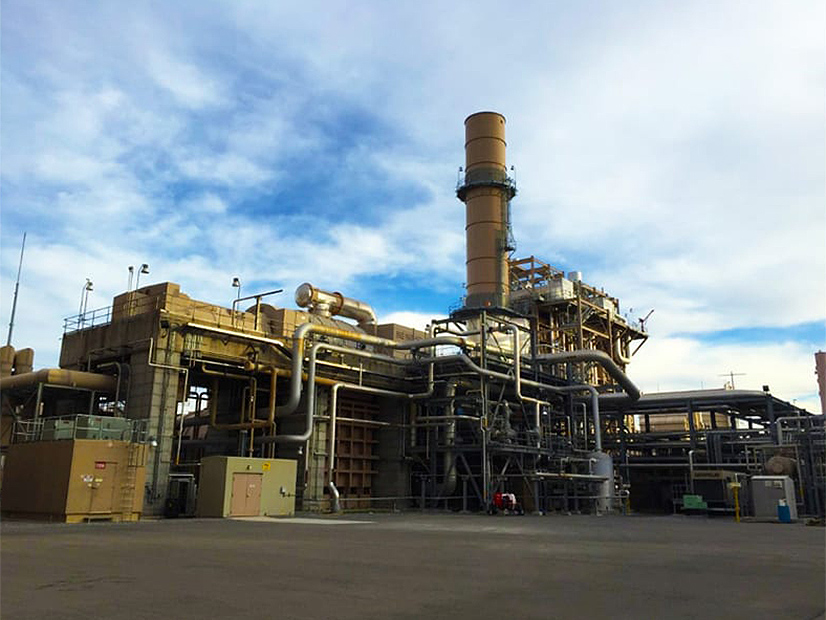
State regulators approved NV Energy’s controversial proposal to build a 400-MW gas-fired peaker plant in Southern Nevada, a facility the company says is needed to reliably serve load as weather has become more extreme and resources more variable.
The Public Utilities Commission of Nevada (PUCN) voted 3-0 on Tuesday to approve the project.
The $333 million peaker will be built at the site of the Silverhawk Generating Station, a 520-MW natural gas-fired plant about 30 miles north of Las Vegas. NV Energy plans to spend another $20 million on associated transmission infrastructure.
The new plant is expected to be in operation in 2024.
The peaker plant is one piece of the fourth proposed amendment to NV Energy’s 2021 integrated resource plan. The remainder of the amendment is still awaiting commission approval.
In addition to the peaker, the proposal includes the addition of geothermal resources and battery storage, as well as the postponed retirement of several gas-fired units in the state. NV Energy said its plan is intended to “advance Nevada’s energy independence.” (See NV Energy IRP Looks to Reduce Reliance on Open Market.)
Nevada has faced energy supply issues for three years in a row, the company said in a PUCN filing.
“Nevada’s historic reliance on the energy market to meet peak period demand is no longer viable and has introduced significant risk of energy shortfalls and associated rolling blackouts in recent years,” the filing said.
NV Energy asked PUCN for an expedited decision on the Silverhawk peaking facility, with an approval by March 10 to keep the project on track to start operations in July 2024.
Even though its plan includes fossil-fuel energy, NV Energy said it will exceed the requirements of the state’s renewable portfolio standard and meet Nevada’s 2050 zero-carbon goal. The goal aims for zero-carbon generation to match the amount of electricity sales by 2050.
The company has proposed limiting operation of the peaking units to 700 hours a year.
PUCN staff called the peaker plant “a reasonable plan to pursue to obtain needed energy and generation capacity.” Staff pointed to a long-term reliability assessment that NERC published in December, which said resource adequacy issues are expected for the foreseeable future.
Following the commission’s vote on Tuesday, Advanced Energy United, a national business association, expressed disappointment in the peaker approval, which it called at odds with the state’s clean energy transition.
“We are disappointed that the utility did not fully consider other, cleaner solutions, such as energy demand reduction, distributed energy and storage that could meet the same need or even improve reliability and resilience at lower cost,” Advanced Energy United director Sarah Steinberg said in a statement.
Other critics of the proposal, including Western Resource Advocates and Google, had called for further analysis of the plan before a decision was made. Google said NV Energy should have modeled the impact of joining a day-ahead market or an RTO in determining the need for the plant.
Google also asked for more vetting of the potential use of hydrogen at the Silverhawk plant. NV Energy said in its filing that the facility would be able to run on a 15% hydrogen fuel mix, with a potential for 100% hydrogen operation in the future.
But the commission rejected the requests for further analysis.
“Given the evidence presented regarding the unpredictability of the regional energy markets, the volatile weather patterns, and the supply chain disruptions in recent years, the commission finds a delay to conduct additional analysis an unacceptable risk to reliability at this time,” the commission said in an order approving the project.



